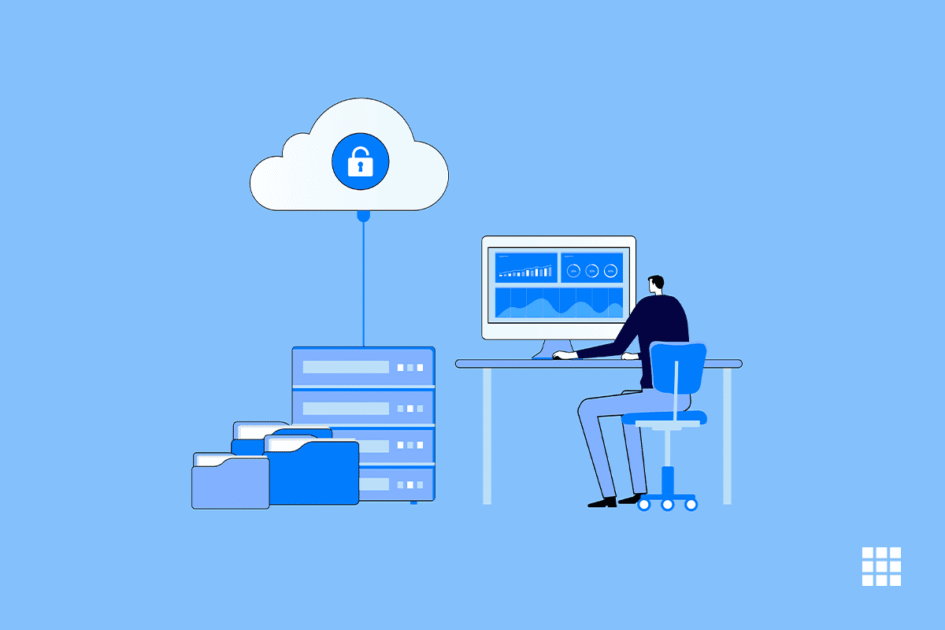Let us say that you have started a business and with some time and effort, it has been running steady and doing well. Your business, as it scales, will also need to go online in a bid to acquire customers digitally. You will eventually need a server to maintain the efficiency of your workplace network as well as your business when it expands and you hire additional staff. But you might be unsure of where to begin because there are so many options and crucial choices to be made. Fortunately, a small- or medium-sized business’ (SMB) server setup doesn’t have to be challenging.
Your server should be of the biggest importance as a factor in the long-term plan for both protection and effective operations because it is the foundation of your company or organisation.
Step-By-Step Server Setup Guide
The procedure for setting up a server in your company is as follows:
- Selecting server hardware
- Choosing an operating system for the server
- Choose a trusted server location
- Server configuration
- Implementing server security
-
Selecting server hardware
Although servers can perform a variety of functions, they are used most effectively when performing only one or a few specific tasks. Depending on the functions you want your server to perform, different hardware and features are required. The most common server applications in commercial environments are as follows:
- File servers
- Database servers
- HTTP (Web) servers
- Mail servers
- Print server
- Domain servers, and
- Application Deployment
The hardware and features that make up each type of server determine what that server is capable of. Therefore, when choosing a server, you should pay close attention to RAM memory, hard disk space and processor size in relation to the purpose of the server.
-
Choose an operating system for the server
Servers require special operating systems that are more reliable and are designed for simultaneous work by multiple users. The most popular server operating systems are:
- Windows Server
- Linux Ubuntu Server
- Linux Red Hat Enterprise Linux
- CentOS
Choosing the best operating system for your server has a significant impact on its cost and, more importantly, its usability. The following points are important to consider before choosing a server operating system:
-
User Friendliness
When selecting a server operating system, ease of installation, setup, and use is a crucial consideration. For small and medium-sized firms that do not have dedicated IT employees, this is extremely important.
Due to their striking resemblance to the Windows operating system for personal computers in terms of appearance and functionality, Windows server operating systems are typically well-liked by current Windows users. For installation, operation, and maintenance, Linux operating systems, on the other hand, have an extremely steep learning curve and call for a Linux expert.
-
Support
Since Linux is an open-source operating system, whenever your server encounters a problem, you may have to spend a lot of time online looking for a solution. However, Microsoft offers excellent multi-channel customer support.
The need for support often has a significant impact on the operating system selected. Since most small businesses find it difficult to maintain their Linux server with a dedicated IT team, Windows Server is often the default choice.
-
Personalization
In comparison to the Windows operating system, Linux is more flexible and offers more customization choices if you have the necessary technical know-how and familiarity.
-
Cost
Linux is less expensive to run than Windows server operating systems because it is an open-sourced programme. However, you also need to take into account the total cost of IT operations, which includes the time and technical know-how needed for server management and maintenance.
-
Choosing a server location
Your server should ideally be situated in a different room. Even if you select a turret server, it’s still advantageous to have a different place for your server. Other than to isolate noisy servers, recommended for security reasons. Controlling physical access to the server might help you lower some of the security risks to your data. In rare circumstances, this can even be necessary to follow legal obligations.
You should have a windowless server room where cooling systems and backup power can be installed. It is important to have a cooling system that can run continuously because high temperatures can damage your server hardware. You must have access to the front and back of the servers in the room. It’s much cheaper to invest in proper racking, although you can easily place your server on a desk or table. Your server hardware is securely stored and racked, increasing scalability.
-
Server configuration
Before you even begin personalising your server, the operating system needs to be installed. On your PC or Mac, using this method isn’t all that different from installing software from a DVD, USB drive, or virtual media. On the server, the operating system might already be installed. In this case, you can go right to configuring.
After installing the operating system, below are some common settings for an office server:
- Choose a strong administrator password for the server
- Set up the network; usually the default network settings are sufficient
- A local administrator account must be added to each computer before connecting to the server
- Set up your server as a domain controller so it can authenticate user credentials and allow all computers on your network to join the new centralized environment
- Set remote access and sharing options
- Server backup set. Follow your company’s data backup plan
- Configure the firewall to protect the server from attacks like phishing, DDOS, etc.
-
Implementing server security
Of course, your server is the most significant piece of technology in your office. All company activities, such as data interchange, database upkeep, and customer support, are based on them. Due to their significance to a company’s daily operations, servers are a top target for hackers. As a result, server security must be properly monitored.
Servers can be attacked in a variety of methods. Web and mail servers are susceptible to malware because of their direct internet connection. A database server, for instance, might not have a direct Internet connection, but it is still susceptible to side incursions from your internal network. Common assault methods include:
- Phishing emails
- DDoS
- Torjan
You can increase the security of your server in the following ways:
- To limit access to servers, set physical and virtual access controls
- Installing and maintaining anti-virus and anti-malware programs
- Installing and maintaining firewalls
- Measures to detect and prevent intruders include
- Protect your data
- Back up important files regularly
Conclusion
Every organisation must invest in a server at some point, whether for growth, business requirements, data security, or compliance. Although setting up a server isn’t difficult, selecting a server that meets your business’s needs is the most important thing you need to do to set up your self for online success. Here is hoping that you have understood how to set up a server step by step for a small business. If you are getting a shared, VPS or even a dedicated server, you can follow these steps and get your server ready.
In case you have any feedback for us, or any doubts, please share them in the comments section below.



Write A Comment